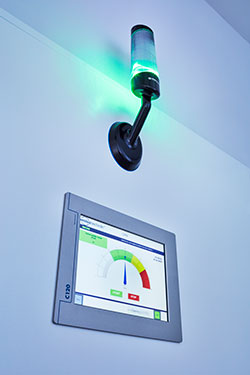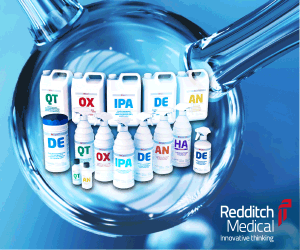For many years, hospitals and operating theatres have achieved a high standard of hygiene in the UK and elsewhere in Western Europe. However, intensifying cost pressures, the shortage of skilled surgical staff and the increasing frequency of multidrug-resistant germs (MRSA) are now causing problems. Existing standards will therefore no longer be adequate in the future, and the risk of patients being exposed to infection during surgical operations will rise.

The patented Continuous Particle Monitoring (CPM) measures airborne particles in real-time and uses simple visual alarms. Clinical staff can “see” when the air isn’t clean due to entrainment or surgical smoke and can take steps to protect themselves and their Patients. CPM is a Mediclean option or available as a stand-alone system.
Airborne particles are a critical factor which have a direct effect on the hygienic standards of the modern operating theatre and their significance is easy to explain: The fewer particles in the air, the fewer germs can be deposited on these particles, any particle above >0.5 microns are able to support viable bacteria which can lead to infection at the wound site.
The traditional measurement provided by a single annual test is simply not sufficient, once calibrated it is “assumed” that the performance of the UCV will not differ drastically over a 12-month term but there are many factors which can directly affect the performance.
Continuous, real-time monitoring - with visual indicators- allows for implementation of improved procedures, risk minimisation and cost efficiencies.
The Brandon Medical team offers support and training on:- How to design and implement custom measures and renewed processes based on continuous airborne particle monitoring during surgical procedures, especially orthopedic
- Role of visual indication of airborne particle load during operations for staff training and lasting behavioural changes in order to achieve higher patient and staff safety
- How to cut energy costs and noise load through automatic, continuous airflow adjustments based on real-time monitoring of airborne particles.




